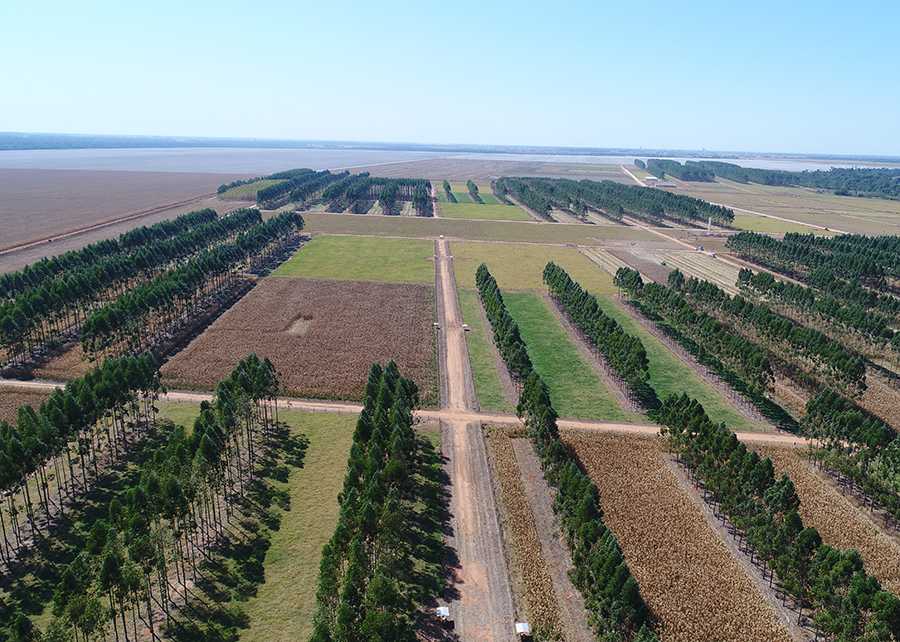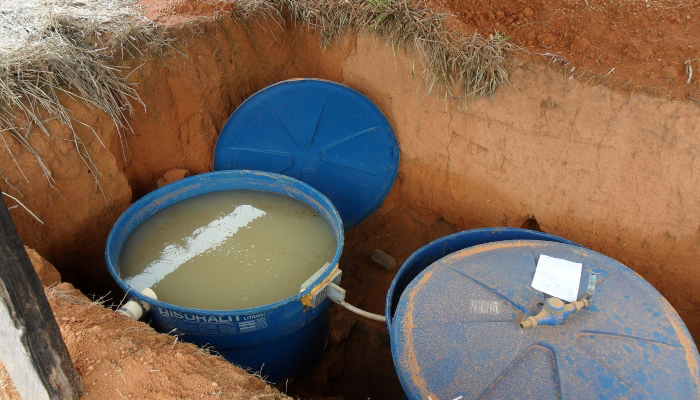ICLF systems reduce soil, water and nutrient loss
ICLF systems reduce soil, water and nutrient loss
Photo: Gabriel Faria

Research conducted in Sinop, MT has shown reduced soil, water and nutrient loss in integrated crop-livestock-forestry systems (ICLFS)
|
Soil, water and nutrient loss due to erosion is lower in integrated crop-livestock-forestry systems (ICLFS) than in crop rotation areas. The finding was made through research conducted in Sinop (MT), in one of Brazil's main grain-producing regions. The work was carried out by researchers from Embrapa Agrosilvopastoral (Sinop, MT) and the Federal University of Mato Grosso (UFMT) , and included the participation of Rattan Lal, winner of the Food Prize (2020) and the Nobel Peace Prize (through ICPP in 2007) and professor at the Ohio State University, in the United States.
The research measured water and soil loss by rainfall surface runoff and the amounts of carbon and nitrogen in its sediments in areas with ICLF, soybean and corn crop in a no-till system, Brachiaria pasture, growing eucalyptus forest and uncovered soil. The data showed that the ICLF system had the lowest losses. At the time of assessment, the integrated system had one-year-old eucalyptus trees, soybean crop in season, and corn crop with Brachiaria as a second season crop.
According to Embrapa researcher Cornélio Zolin, the assessment showed that even though the trees were still small, ICLFS proved to be a more efficient alternative regarding water and soil conservation, which are determining elements for the success of agricultural production.
"Choosing soil conservation, and therefore water conservation, favors a higher use of nutrients and reduces the farmer's costs. For the longevity of this very important region in the face of increasingly adverse climate scenarios, a careful look at the conservation of soil, water, and the maintenance of nutrients in the soil will be imperative," Zolin says.
Another important aspect is the possibility of improving soil conservation practices in the short term. With only one year since its installation, with still small-sized trees, ICLF has already proven to be more conservationist than the other studied forms of soil use.
Scientific publicationStudy results were published in the journal Acta Amazonica, in the paper Short-term effect of a crop-livestock-forestry system on soil, water and nutrient loss in the Cerrado- Amazon ecotone. Embrapa researchers Cornélio Zolin, Eduardo Matos, Ciro Magalhães, Sílvio Spera and Maurel Behling; UFMT professor Janaína Paulino; and Rattan Lal, from Ohio State University authored the paper.. |
 ICLF has lower losses
ICLF has lower losses
Research results showed that, regarding soil loss, ICLF numbers were statistically similar to those of pasture and forestry, however they were better than the crop's ones. ICLFS lost 238 kg of soil per hectare, while the soybean and corn rotation lost 856 kg. Exposed soil, without any type of cover, lost 16 tons per hectare.
Regarding water loss due to surface runoff, ICLFS had the best result, losing 34.5 liters per hectare. The crop lost 48.1 liters, a level statistically similar to that of pasture and forestry. Bare soil, on the other hand, lost 675 liters per hectare.
"Systems that conserve more water in the soil are more resilient, since plants will be able to better use the 'additional' stored water, making crops less sensitive to dry spells and consequently to productivity drops due to water deficit in the soil," the researcher explains.
Measurement was made through a gutter system that directed surface runoff to water tanks installed in trenches. Cotton sacks filtered sediments, in which the amounts of carbon and nitrogen lost were measured. In this regard, ICLFS also fared better than the crop. 0.36 kg of nitrogen (N) and 4.27 kg of carbon (C) per hectare were lost, against 1.34 kg of N and 20.48 kg of C in the soybean and corn rotation. Pasture and forestry data did not differ statistically from ICLFS. However, bare soil had losses of 29.23 kg of N and 428.17 kg of C.
“We observed in ICLFS a carbon loss reduction of almost 99% in relation to bare soil and about four times lower compared to the no-till crop. That means the system is able to avoid loss and, combined with the higher potential to contribute more carbon through the residues that are generated by the system, helps maintain or even increase the organic matter content in the soil," analyses Embrapa's Secretariat of Intelligence and Strategic Affairs (Sire) researcher Eduardo Matos.
 Scientific partnership
Scientific partnership
The research data were collected in a long-term experiment installed at Embrapa Agrosilvopastoral, in Sinop, MT. Multidisciplinary work began in 2011 and assessments on water loss happened from 2012 to 2015.
In 2016, award-winning scientist Rattan Lal taught a two-week course at Embrapa Agrosilvopastoral and was enthusiastic about the research with ICLF systems. Since then, he has been collaborating to interpret the data regarding soil conservation.
Recently, Lal gave the opening lecture at the II World Congress on Integrated Crop-Livestock-Forestry systems. On that occasion, he reinforced the role of ICLFS for sustainable production, saying agriculture needs to be a solution to environmental issues and that integrated systems are options to do that.
Gabriel Faria (MTb 15.624/MG)
Embrapa Agrosilvopastoral
Press inquiries
agrossilvipastoril.imprensa@embrapa.br
Translation: Raquel Porlan, supervised by Mariana Medeiros (13044/DF)
General Secretariat
Further information on the topic
Citizen Attention Service (SAC)
www.embrapa.br/contact-us/sac/
